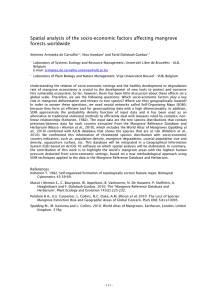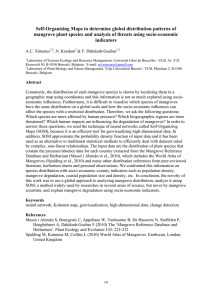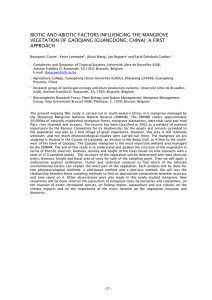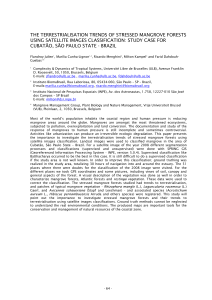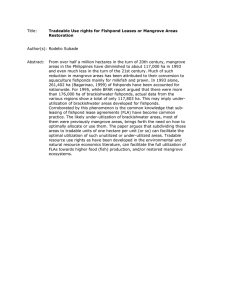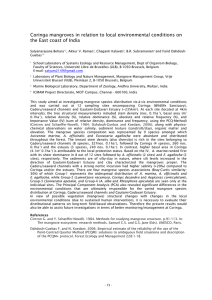Distribution of threatened mangrove tree species analysed using the
advertisement
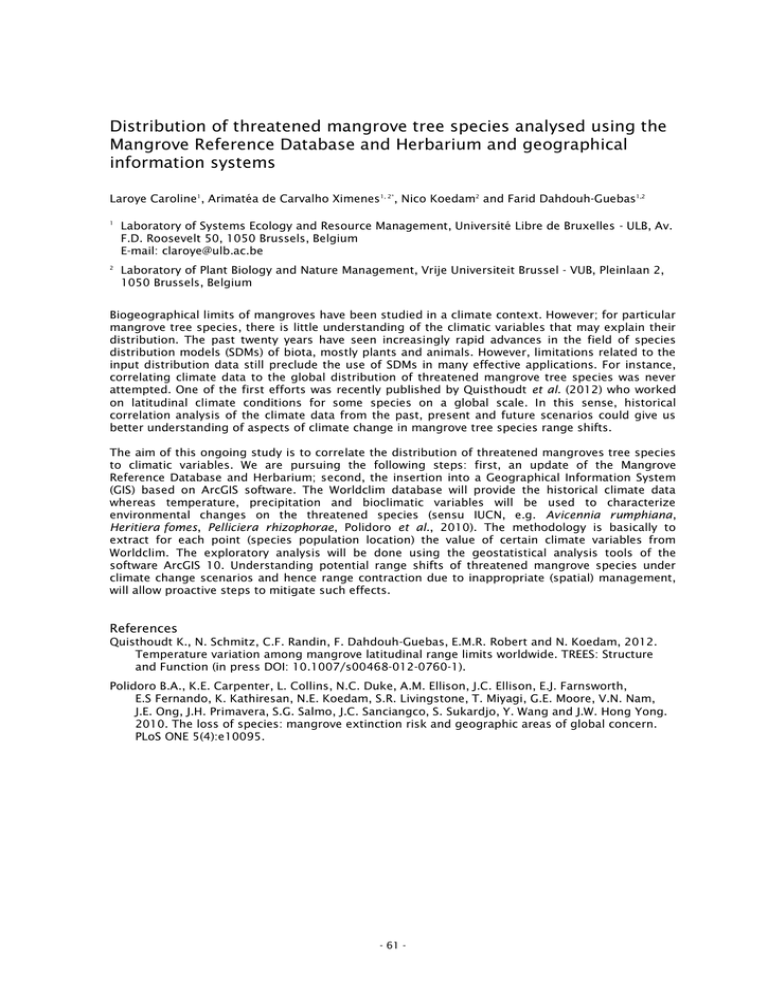
Distribution of threatened mangrove tree species analysed using the Mangrove Reference Database and Herbarium and geographical information systems Laroye Caroline1, Arimatéa de Carvalho Ximenes1, 2*, Nico Koedam2 and Farid Dahdouh-Guebas1,2 1 Laboratory of Systems Ecology and Resource Management, Université Libre de Bruxelles - ULB, Av. F.D. Roosevelt 50, 1050 Brussels, Belgium E-mail: claroye@ulb.ac.be 2 Laboratory of Plant Biology and Nature Management, Vrije Universiteit Brussel - VUB, Pleinlaan 2, 1050 Brussels, Belgium Biogeographical limits of mangroves have been studied in a climate context. However; for particular mangrove tree species, there is little understanding of the climatic variables that may explain their distribution. The past twenty years have seen increasingly rapid advances in the field of species distribution models (SDMs) of biota, mostly plants and animals. However, limitations related to the input distribution data still preclude the use of SDMs in many effective applications. For instance, correlating climate data to the global distribution of threatened mangrove tree species was never attempted. One of the first efforts was recently published by Quisthoudt et al. (2012) who worked on latitudinal climate conditions for some species on a global scale. In this sense, historical correlation analysis of the climate data from the past, present and future scenarios could give us better understanding of aspects of climate change in mangrove tree species range shifts. The aim of this ongoing study is to correlate the distribution of threatened mangroves tree species to climatic variables. We are pursuing the following steps: first, an update of the Mangrove Reference Database and Herbarium; second, the insertion into a Geographical Information System (GIS) based on ArcGIS software. The Worldclim database will provide the historical climate data whereas temperature, precipitation and bioclimatic variables will be used to characterize environmental changes on the threatened species (sensu IUCN, e.g. Avicennia rumphiana, Heritiera fomes, Pelliciera rhizophorae, Polidoro et al., 2010). The methodology is basically to extract for each point (species population location) the value of certain climate variables from Worldclim. The exploratory analysis will be done using the geostatistical analysis tools of the software ArcGIS 10. Understanding potential range shifts of threatened mangrove species under climate change scenarios and hence range contraction due to inappropriate (spatial) management, will allow proactive steps to mitigate such effects. References Quisthoudt K., N. Schmitz, C.F. Randin, F. Dahdouh-Guebas, E.M.R. Robert and N. Koedam, 2012. Temperature variation among mangrove latitudinal range limits worldwide. TREES: Structure and Function (in press DOI: 10.1007/s00468-012-0760-1). Polidoro B.A., K.E. Carpenter, L. Collins, N.C. Duke, A.M. Ellison, J.C. Ellison, E.J. Farnsworth, E.S Fernando, K. Kathiresan, N.E. Koedam, S.R. Livingstone, T. Miyagi, G.E. Moore, V.N. Nam, J.E. Ong, J.H. Primavera, S.G. Salmo, J.C. Sanciangco, S. Sukardjo, Y. Wang and J.W. Hong Yong. 2010. The loss of species: mangrove extinction risk and geographic areas of global concern. PLoS ONE 5(4):e10095. - 61 -
